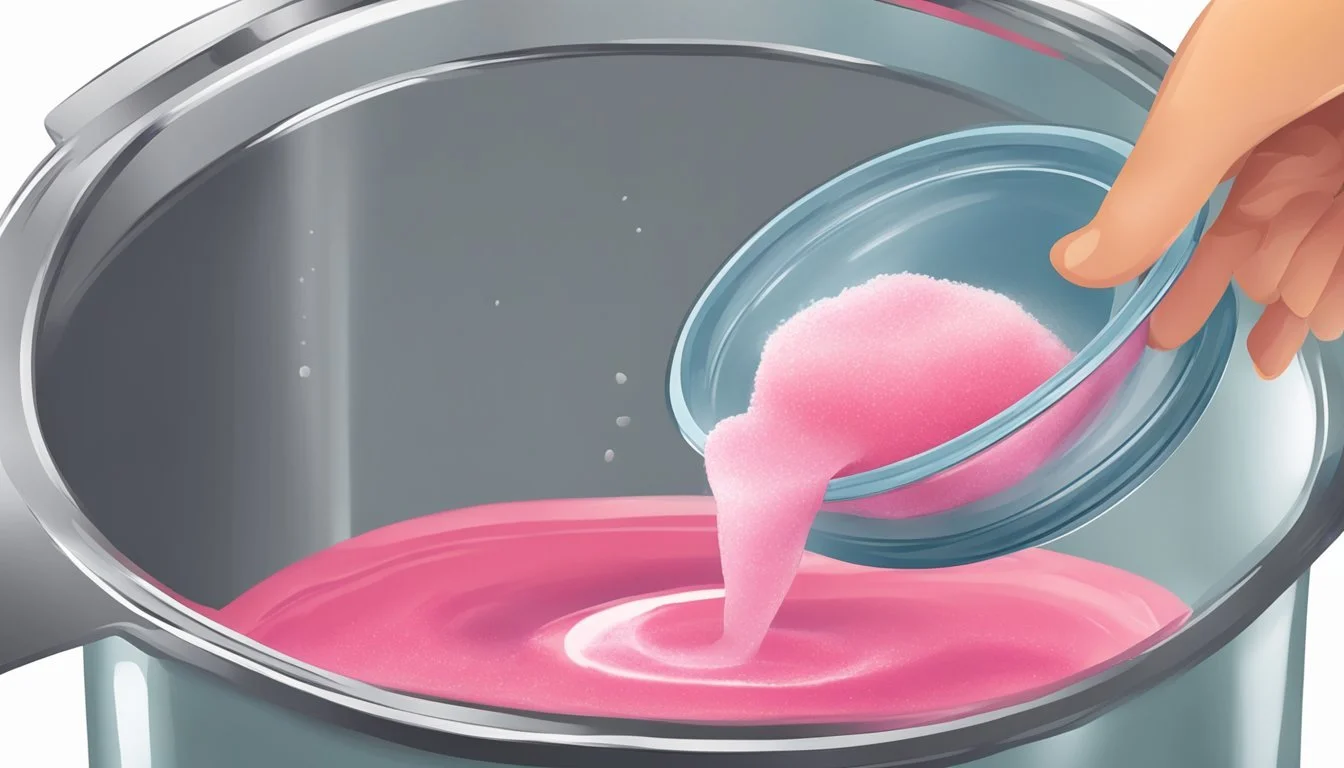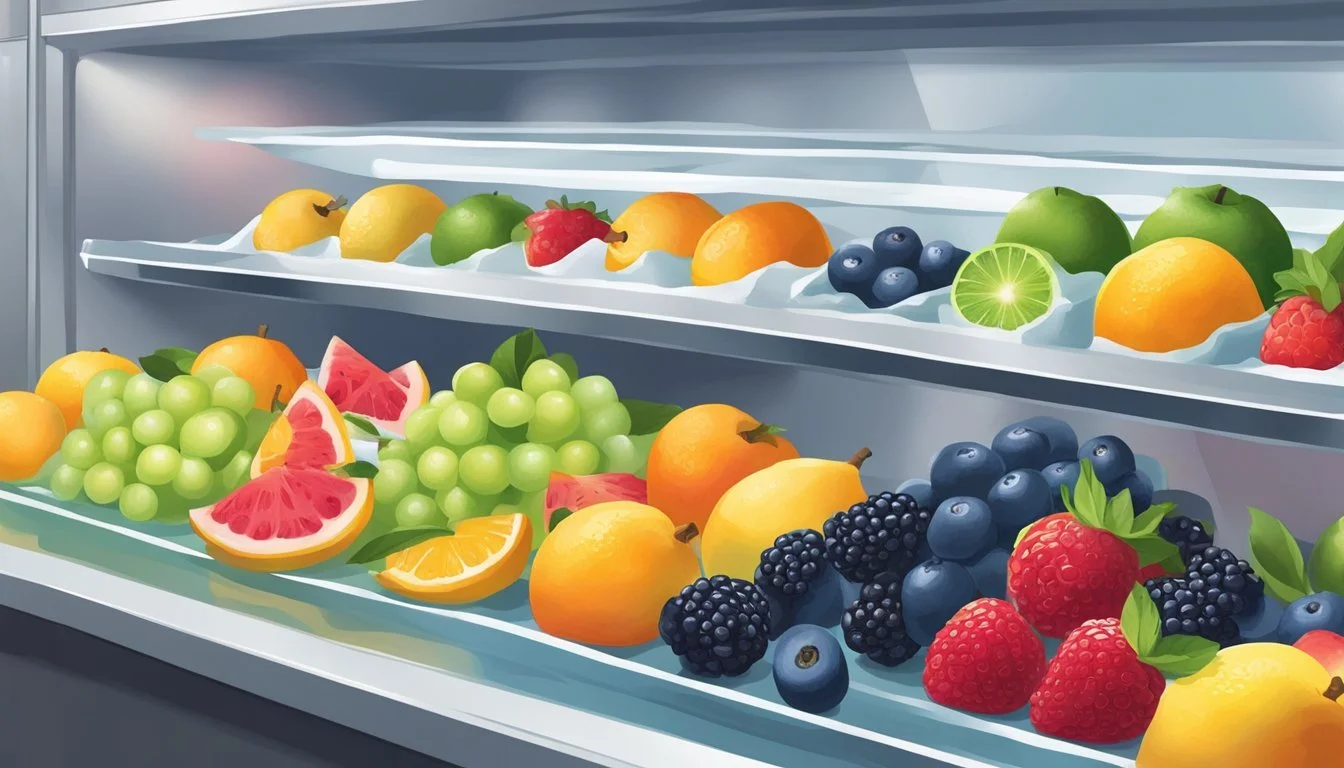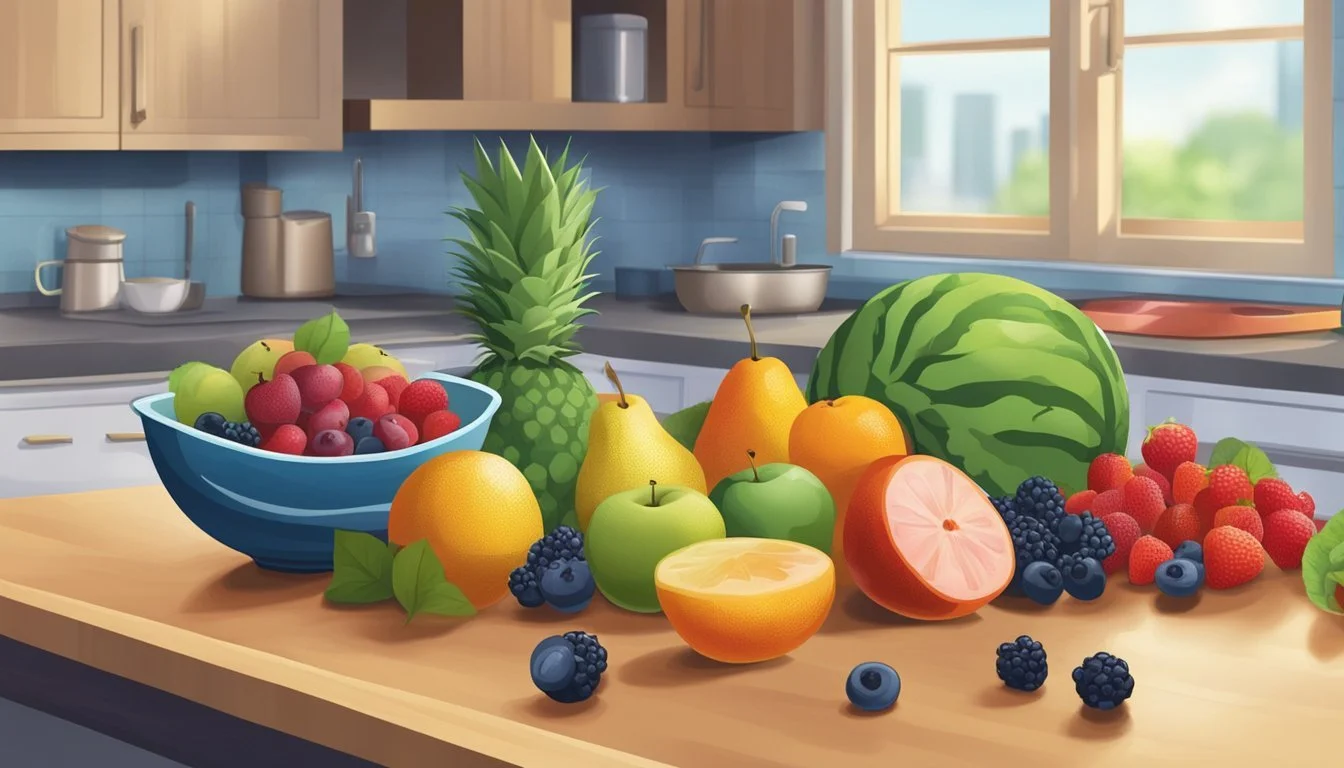The No-Churn Sorbet
Creating Refreshing Fork-and-Freezer Treats at Home
Sorbet stands out as a refreshing treat perfect for the health-conscious and those looking to indulge in a fruity dessert without the complexities of traditional ice cream. No-churn sorbet, in particular, offers a straightforward solution for making this icy delicacy at home, requiring no special equipment besides a common fork and a standard freezer. This simple method allows even culinary novices to create delicious sorbets with a variety of flavors, offering a delightful way to cool down on a hot day or add a sophisticated touch to any meal.
With the ease of preparation, no-churn sorbet becomes an attractive option for quick dessert creation. By using fresh ingredients and a basic process of freezing and stirring, sorbets retain the vibrant flavors of their fruit bases, providing a pure and intense taste experience. Furthermore, this method eliminates the need for an ice cream machine, making sorbet more accessible to a wider audience.
The key to a successful no-churn sorbet lies in the balance of its few components – primarily fruit, water, and sugar. Once mixed and cooled, the sorbet mixture is poured into a freezer-safe container and stirred intermittently with a fork to break up ice crystals, resulting in a smooth and scoopable texture. Whether opting for zesty citrus, tropical mango, or any fruit of their choosing, individuals can easily craft an elegant and refreshing sorbet using these basic kitchen tools.
Understanding No-Churn Sorbet
Sorbet is a delightful dessert option for those who desire a dairy-free and refreshing treat. The no-churn method simplifies the process, eliminating the need for specialized equipment like an ice cream maker.
What is No-Churn Sorbet?
No-churn sorbet is a frozen dessert made without the use of an ice cream maker. Typically, it involves pureeing fruits and combining them with sweeteners before freezing. No-churn methods often involve periodic stirring to prevent ice crystal formation, resulting in a smooth and tender final product. Because it does not contain dairy, it's not only a lighter option but also suitable for those with dairy intolerances or allergies.
Process: Puree fruits, combine with sweetener, freeze.
Equipment: Freezer, blender/food processor, fork or whisk.
Benefits of No-Churn Sorbet
The simplicity of no-churn sorbet is one of its greatest benefits. One does not require the usual ice cream maker, making it easy to make and versatile, ideal for a variety of flavors and ingredients.
Dairy-Free: It provides a succulent alternative for those avoiding dairy.
Minimal Equipment: All you need is a freezer and a blending tool.
Unique and Versatile: Customize with an array of fruits and flavorings.
Moreover, no-churn sorbet can be a healthier option since it often contains just fruit and a sweetener. It's a delightful and straightforward way to enjoy a frozen dessert at home.
Preparation Basics
Preparing no-churn sorbet is a straightforward process that involves combining simple ingredients and leveraging the power of your home freezer. This method doesn't require an ice cream machine, making it accessible for anyone to create a refreshing frozen dessert. The preparation relies on a few basic components and allows for variation and customization.
Essential Ingredients
To start making a no-churn sorbet, one only needs a handful of components:
Fruit: The star of the sorbet, fruit should be ripe and flavorful. It can be used fresh or frozen.
Sugar: Essential for sweetness and texture; it lowers the freezing point of the mixture, helping to create a smooth sorbet.
Water: Works with sugar to form a simple syrup that gives the sorbet its base.
Lemon Juice: Adds brightness and balances the sweetness of the fruit and sugar.
One should begin by preparing a simple syrup using sugar and water, boiling them together until the sugar dissolves. After cooling the syrup, it is then mixed with the main fruit flavoring – either pureed or juiced – along with lemon juice. The mixture is then poured into a freezer-safe container to freeze until solid, often with intermittent stirring to improve texture.
Substitutes and Variations
There are several substitutions one can make for a tailored or dietary-specific sorbet:
For a vegan option, one can use plant-based sweeteners like maple syrup or agave in place of honey.
Coconut milk can be added to introduce a creamy texture and rich flavor, often in place of some of the water.
Various sweeteners can be used, such as maple syrup or honey, to replace traditional sugar.
Different fruits can be employed for a wide array of flavors, and the simple syrup can be infused with herbs or spices to add complexity. This allows for countless variations, suitable for all palates and dietary restrictions.
Creating the Perfect Texture
When making no-churn sorbet, achieving a smooth consistency involves a careful balance of technique and temperature control. The right texture is key to a delightful sorbet experience.
Achieving Smooth Consistency
The journey to smooth sorbet begins with a food processor or blender, which are essential for breaking down fruit into a fine puree. Starting with frozen fruit, one should process it until it reaches an even consistency. To ensure smoothness:
Blend the frozen fruit until there are no visible chunks.
For added creaminess, incorporate simple syrup or chilled liquid ingredients during the blending process.
If the sorbet isn't smooth enough, one can strain it through a fine mesh sieve to remove any fibrous bits.
Common Issues and Solutions
Freezer Burn: One common issue with homemade sorbet is freezer burn, which impairs both flavor and consistency. To prevent this:
Use an airtight container for storage.
Press plastic wrap firmly against the surface of the sorbet before sealing.
Grittiness: A gritty texture can occur if the sugar isn't dissolved properly or if the sorbet is frozen too quickly. To combat grittiness:
Ensure sugar or syrup is fully integrated before freezing.
Stir the sorbet a few times during the initial freezing process to break up ice crystals.
Shelf Life: The shelf life of no-churn sorbet is shorter than commercial options. Consume homemade sorbet within two weeks for optimal texture.
By addressing these issues, one can achieve a sorbet that is not only refreshing but also boasts a pleasing consistency ideally suited for a hot day's reprieve.
Flavoring Your Sorbet
Creating a no-churn sorbet offers a wide range of flavoring possibilities, from the enjoyment of well-loved classics to the excitement of innovative and unique taste combinations. By selecting the finest ingredients and pairing them thoughtfully, one can craft a delightful frozen treat that tantalizes the taste buds.
Classic and Popular Flavors
Lemon Sorbet: A traditional favorite, lemon sorbet is made with fresh lemon juice and zest, offering a tangy and refreshing taste. Often served as a palate cleanser or a light dessert, lemon sorbet can also be garnished with mint for extra freshness.
Berry Sorbets: Utilizing a variety of berries such as strawberries, raspberries, and blackberries, these sorbets are vibrant both in color and flavor. Fruit puree is the base, yielding a rich and smooth texture. For an additional layer of flavor, one might infuse the puree with herbs such as thyme or basil.
Mango Sorbet: This tropical fruit sorbet is praised for its intensely sweet and creamy flavor. It demands only the freshest mango puree to achieve its characteristic smoothness.
Experimental and Unique Flavors
Herbs and Spices: Incorporating herbs like basil or spices such as cardamom into sorbets creates a distinctive profile that intrigues the palate. Herbs are often steeped with the sugar syrup to impart their essence without overpowering the primary fruit flavor.
Liqueur-Infused Sorbets: Adding a splash of liqueur or vodka not only introduces a nuanced taste but can also improve the sorbet's texture due to the alcohol's freezing point.
Gourmet Garnishes: To elevate the sorbet's presentation and taste, one can use garnishes. A sprig of mint, a basil leaf, or a light dusting of ground spices can markedly accentuate and complement the primary flavors of sorbet.
Serving and Storing Tips
Proper serving and storage are essential to enjoying no-churn sorbet at its best. This section provides the reader with practical methods for serving sorbet immediately and guidelines for maintaining its freshness over time.
Best Ways to Serve
Sorbet can be scooped into a variety of dishes depending on the occasion. A metal loaf pan can serve as an impromptu serving vessel, offering a sleek presentation. For a more refined look, individual scoops can be placed in chilled glass bowls, garnished with fresh fruit. To elevate the experience, sorbet can be presented alongside a slice of cake or served with a sprig of mint as a garnish. These serving suggestions provide an enticing visual and enhance the overall flavor profile.
Storing for Longevity
For storing sorbet, its shelf life and texture quality are primary considerations. A freezer-safe container or an airtight container keeps the sorbet protected from freezer burn. To extend freshness, one should freeze the sorbet promptly after preparation. If dealing with leftovers, they can be transferred to a container, sealed tightly with a lid or plastic wrap, and stored in the freezer. It's generally recommended to consume the sorbet within 1 month for optimal flavor and texture, stirring it every 30 minutes initially if a smoother consistency is desired.
Sorbet in Social Media
Social media platforms, particularly Instagram, have transformed the way people share and discover refreshing summer treats like no-churn sorbet.
Instagrammable Sorbet Presentations
On Instagram, the visual appeal of food is paramount, and sorbet is no exception. Users revel in the aesthetics of colorful, neatly-presented scoops. Sorbets made from vibrant fruits such as mango and raspberry become the stars of summer-themed posts. Food bloggers and home cooks use props, garnishes, and high-quality images to enhance the visual appeal of their sorbet presentations, driving social media engagement. Some opt for the contrast of the bright sorbet against minimalist backgrounds, while others compose a vivid tableau that screams summer refreshment.
Sharing Recipes and Experiences
The community aspect of food blogs is flourishing on platforms like Instagram, where recipe exchange is a cornerstone of engagement. Users share their no-churn sorbet recipes, often detailing the simple process involving a food processor and freezer, without the need for an ice cream maker. Comments and direct messages buzz with conversations about personal experiences, flavor combinations, and tips for achieving the perfect consistency. This recipe-sharing is a testament to the collective enjoyment of refreshing treats and the value placed on community knowledge.
Nutritional Information
When considering the nutritional aspects of no-churn sorbet, it is essential to evaluate both the health benefits and the specific content of calories and sugars. This allows individuals to enjoy this fruity dessert while staying informed about its place within their dietary considerations.
Health Benefits of Sorbet
No-churn sorbet is often chosen for its refreshing qualities and fruit-based ingredients. Sorbet typically contains a high percentage of fruit, which contributes vitamins and minerals to one's diet. For example, a sorbet made with lemon will provide vitamin C, known for its immune-boosting properties. Moreover, dairy-free sorbets provide an alternative for those with lactose intolerance or following a vegan lifestyle, ensuring they can savor a frozen treat without concern.
Vitamin C: Found in citrus-based sorbets like lemon or tangerine.
Minerals: Such as potassium, which can be present in fruit like peaches.
Hydration: Fruity sorbets have a high water content, which helps in staying hydrated.
Caloric and Sugar Content
While sorbet is often considered a lighter option compared to other frozen desserts, it is still important to be mindful of its caloric and sugar content. The primary source of calories in sorbet is the sugar used to enhance the sweetness of the fruit. As such, the calorie count can vary significantly depending on the amount and type of sweetener used.
Typical Nutritional Information for Sorbet (per 1/2 cup serving).
Nutrient Value Calories 90-150* Total Sugar 20-30g*
*Values are approximate and can vary based on the fruit and added sweeteners.
Natural Sugars: Fruits contribute natural sugars, which are a form of simple carbohydrates.
Added Sweeteners: Many recipes call for honey, maple syrup, or sugar to sweeten the sorbet further.
Caloric Density: Homemade sorbets can be tailored to reduce sugar content, thereby lowering the calories.
Sorbets without added refined sugars cater to dietary restrictions and preferences, including those on vegan or dairy-free diets, by using alternatives like maple syrup or honey. However, individuals monitoring their sugar intake should note the total sugar content, including natural sugars from fruit.
Conclusion
No-churn sorbet offers a delightful respite from the summer heat. One can effortlessly create homemade frozen desserts that are both refreshing and flavorful. Utilizing frozen fruit as a base, individuals have the liberty to craft an array of flavors catering to personal preferences.
Watermelon sorbet stands out as a quintessential summer treat, encapsulating the essence of the season in each scoop. No special equipment beyond a fork and freezer is needed, making the process accessible for anyone seeking a homemade indulgence.
Moreover, these frozen desserts not only beat the heat but also serve as a healthier alternative to traditional ice cream. With the simplicity involved in making no-churn sorbet, it invites experimenters and connoisseurs alike to explore the endless possibilities of fruit combinations and natural sweeteners.
Committing to the DIY approach not only offers a customized taste experience but also instills a sense of accomplishment in creating something delightful from scratch. Whether one opts for the luscious texture of mango or the refreshing simplicity of lemon, no-churn sorbet stands as a testament to the ease with which one can bring the joy of summer into their home.







